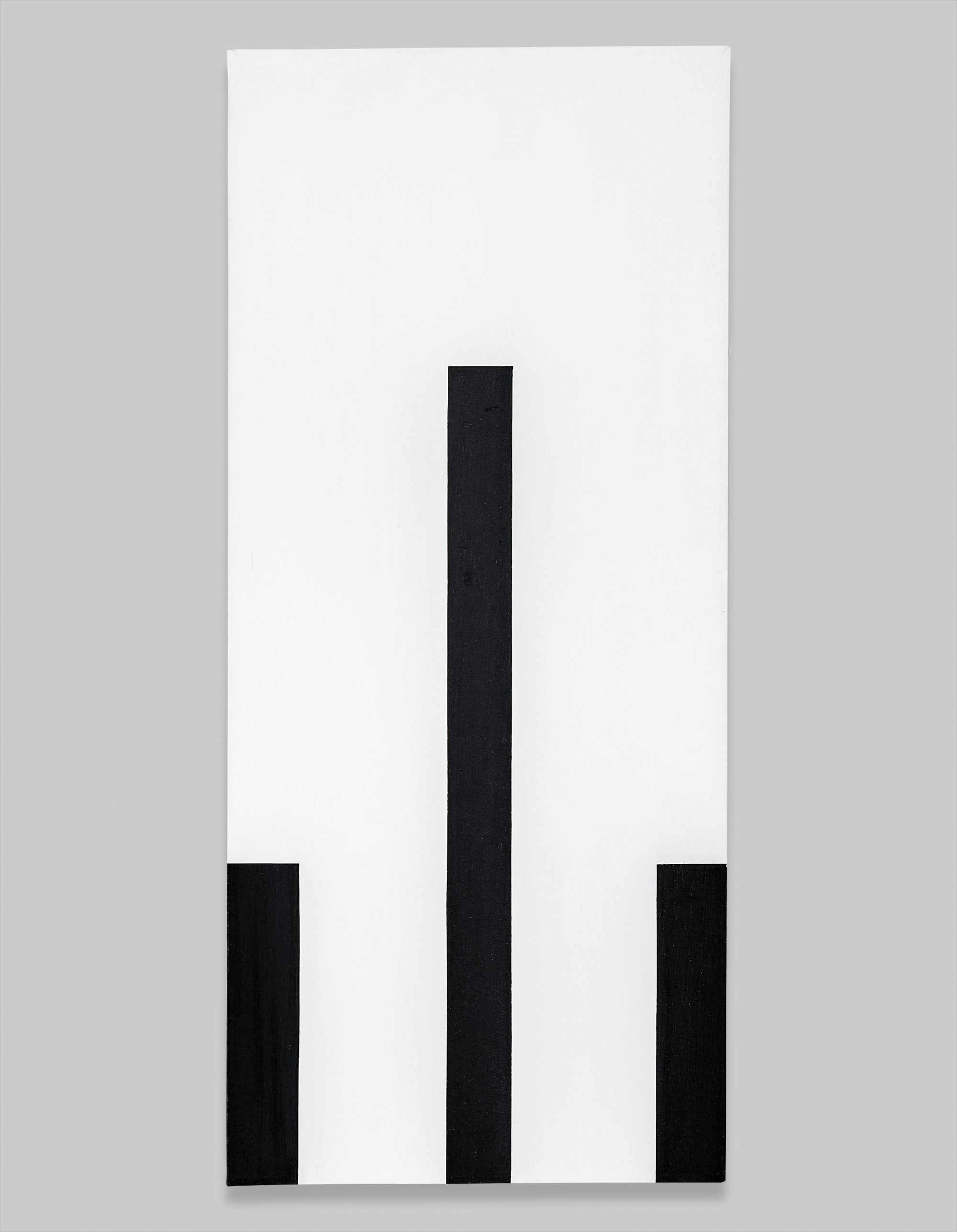

15
Carmen Herrera
Untitled
Full-Cataloguing
Herrera was born in Cuba in 1915 to a respected intellectual family, who allowed her access to art at a young age. She began her sojourn into Concrete art when studying in Paris in the early 1930s at Marymount College. Her mature work follows in the tradition of masters such as Piet Mondrian, Theo Van Doesburg and Kasimir Malevich, and was developed simultaneously alongside her more internationally recognized contemporaries—artists like Ellsworth Kelly, Barnett Newman and Frank Stella. Yet as a woman and a Latin American artist, Herrera found it difficult to make her mark in New York, where she has lived and painted since 1954. To understand her unique path towards hardedge abstraction it’s important to go back to her roots in Cuba, where she returned from Paris in 1935 to study architecture at the University of Havana School of Architecture. Ponce de León points out “The harmony, the study of proportion, the conception of space, and the abstract thought intrinsic to the discipline [of architecture] were concerns that evolved rapidly in her painting” (Ponce de León, Carmen Herrera: The Black and White Paintings, 1951-1989, El Museo de Barrio, p. 4).
Leaving Cuba behind to first move to New York in 1939 with her American husband, Jesse Lowenthal, Herrera had a brief stint at the Art Students League but found the expressionistic New York arts scene at odds with her artistic inclinations. She and Jesse lived together in Paris from 1948 to 1954, where Herrera was much more comfortable and inspired, experimenting with new styles and exhibiting in the important Salon des Réalités Nouvelles each year from 1949 to 1952. Within this creative environment, Herrera left romantic abstraction behind and concretized her mature style of stark, smooth planes of exquisitely balanced proportions and harmonic color.
Returning to New York in 1954 at the height of Abstract Expressionism, Herrera found herself ahead of her time and yet pigeonholed by her own identity. She had less than four one-person exhibitions between 1956 and 1985, and is only now beginning to receive the acclaim that her work has always merited. With the remarkable reception of her retrospective at the Whitney Museum of American Art in 2016, Herrera is finally taking center stage on the international art scene. At over 100 years old, she still paints every day, reiterating her dedication to her practice despite a long career that until recently received so little attention. The black and white paintings’ importance cannot be understated, as a grounding escape from the spiritual pull of color. Works such as Untitled (1971) are undoubtedly linked to her background in architecture yet entirely concrete in their design. The harmonic symphony of stillness in this composition captivates the viewer, demanding attention despite its simplicity, reminding us of Herrera’s the extraordinary and pioneering achievements in abstract art.
Carmen Herrera
Cuban / American | B. 1915 D. 2022Carmen Herrera is finally receiving long-deserved recognition for her arresting, hard-edge geometric compositions. Born in Cuba in 1915, Herrera has spent most of her life outside the island, permanently settling in New York in the mid-1950s. Herrera was formally trained as an architect at the Universidad de la Habana, and later completed studies at the Art Students League in New York from 1943 to 1945. During this time she became acquainted with key figures of postwar abstraction including Barnett Newman, whose work undoubtedly influenced Herrera's minimalist aesthetic.
Herrera's work is chiefly concerned with formal simplicity and experimentation with bold color. Through the use of sharp lines and stark color contrasts, she creates dynamic and technically sophisticated compositions that reflect movement, balance and symmetry.